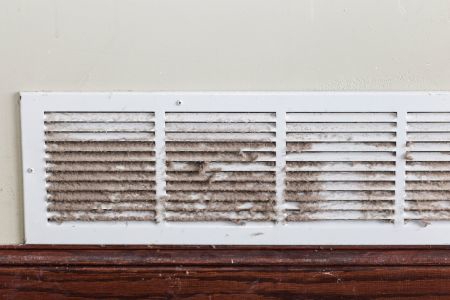Indoor Air Quality Matters During Peak Allergy Season
Learn How to Tackle Allergens With Better IAQ
As allergy season intensifies, many people experience sneezing, congestion, and itchy eyes. There isn't much you can do to avoid allergens, like pollen, while outside. However, indoor air quality (IAQ) significantly impacts allergy symptoms. Common allergens such as mold spores, cat dander, and dust mites can exacerbate allergy symptoms. Understanding how these variables influence air quality can help homeowners create a healthier indoor environment.
Duct Cleaning: Removing Hidden Allergens
Air ducts circulate the air you breathe and gather dust, pet dander, and mold spores. When these allergens collect, they spread throughout your home, worsening symptoms. Regular duct cleaning helps eliminate allergens, improves airflow, and reduces airborne irritants. Clean ducts also help HVAC systems work more efficiently by avoiding dust and debris intake.
Mold Spores and Dust Mites: Silent Irritants
Microscopic mold spores can become airborne, potentially aggravating asthma and allergies. Even if mold isn't visible, high humidity and moisture issues create ideal conditions for growth behind walls, under floors, and inside ductwork.
Preventing mold growth starts with moisture control. Fixing leaks immediately, using dehumidifiers, and improving ventilation can help keep mold spores from spreading. If mold is already present, professional remediation is necessary to eliminate the source and improve indoor air quality.
Elevated humidity in a home can create a hospitable environment for another common allergen catalyst: dust mites. Dust mites are microscopic pests that flourish in warm, humid areas and feed on dead skin cells. While they don't bite, their waste and shed body parts are common allergy triggers, causing sneezing, congestion, and itchy eyes. These allergens accumulate in bedding, carpets, and air ducts, circulating through the home and worsening respiratory symptoms. Regular cleaning, humidity control, and air filtration can help reduce dust mite populations and improve your IAQ.
Radon: An Invisible Threat to Air Quality
Radon is a clear, odorless gas that enters homes through foundation cracks. Long-term radon exposure increases the risk of certain types of cancer, making it a serious IAQ concern. While radon isn't an allergen, poor ventilation can trap this harmful gas indoors, further impacting respiratory health. Radon levels are only detected through testing. If levels are high, mitigation systems can safely redirect the gas outdoors, reducing health risks and improving air quality. Ensuring proper airflow and ventilation is key to maintaining safe indoor air.
Take Steps to Improve Indoor Air This Allergy Season
Poor indoor air quality can make allergy symptoms worse. Cleaning air ducts, controlling mold growth, and addressing radon levels are essential to creating a healthier home.

Contact AdvantaClean at (877) 800-2382 for professional IAQ solutions to schedule an indoor air quality assessment and breathe easier this allergy season.